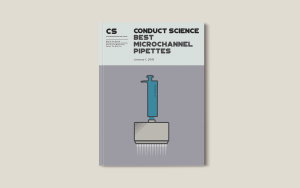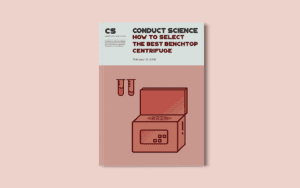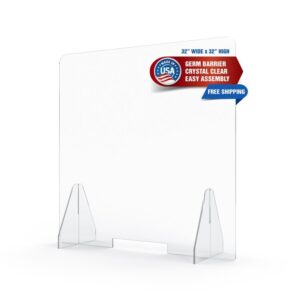
Best Microchannel Pipettes: A Comprehensive Guide
Introduction Pipetting, at first glance, would seem a fairly simple and easy task. Essentially described as glass or plastic tubes used to measure and transfer

Getting a grant is the dream of every researcher; however, not many are lucky or experienced enough to get one. Most of them face rejections, sometimes repeatedly, mainly due to training deficiency in the grant writing process. Even a brilliant research idea will be declined by the peer review panel if it is coupled with a stellar grant application.
These errors, which constitute the main reason for application rejection, can belong to any section of the grant application. This article discusses the frequent errors found in the hypothesis section of the grant proposal. It also gives many tips and tricks to rectify these errors.
There are a few basic principles for constructing each section of your grant application. The writers are expected to follow them. These fundamental principles are:
Many grant proposals are refused every year due to errors in different sections of the applications. Henceforth, we will deal with the most common errors found in the hypothesis section. With every error, we will discuss the possible solutions to rectify it.
The errors include:
The purpose of the hypothesis section is to extract potential hypotheses from your specific aims. The majority of the applications miss the phrases that directly link their hypothesis with the claimed objectives. While reviewing the application, the reviewers feel like the aims and hypotheses of your research project are two separate parts. The main connection seems to be missing between the sentences. This gross deficiency leads to a lack of comprehension by the reviewers regarding your desired research idea.
How to correct it?
This error can be corrected by following these instructions carefully:
Another commonly seen error is the vague explanation of the hypothesis. The sequence of the sentences rather seems off in these applications. This is due to the haphazard statements while clarifying your hypothesis. There is a deficiency of flow in the information provided in this section. Hence, the ability to convey your hypothetical ideas is compromised. This makes the reviewers think that you lack writing skills and further creates question marks for your research skills.
How to correct it?
Several instructions should be followed to rectify the error of vague content in your text. These directions include:
This way, your reviewers will effortlessly contemplate your claimed hypothesis. They will feel comfortable while reviewing this section of your application. It will also save time for the reviewers who have to reevaluate each application in a short period.
Many of the applications postulate their hypothesis in random order. This is a big error on the part of writers. Random enumeration of your research hypothesis will make it difficult for the reviewers to differentiate between the primary and secondary hypotheses. A lack of prioritization causes confusion in the reader’s mind. The main hypothesis is lost between the secondary hypotheses quoted in the top-most position. The reviewers do not have time to find the main hypothesis for themselves. So, it is better to be careful.
How to correct it?
Whenever you enumerate your project’s hypothesis, you have to do it order-wise. The rules of thumb will guide you:
The section of the hypothesis has a set page limit. Some writers do not care about this set limit. This introduces extra data into the relevant and necessary hypothetical data. The peer-review members never like to fetch the relevant information from your application, nor do they have enough time to do so. They will simply get irritated with your lengthy paragraphs relating to your hypothesis. This fetching of basic information is known as fishing. It gives a negative impression about your research writing skills.
How to correct it?
The applications which provide directly relevant information in the hypothesis section are likely to get good scores. Follow these instructions to avoid the provision of irrelevant information:
The rationale under each hypothesis is necessary for its support. Unfortunately, several applications are declined every year due to the deficiency in proper justification for their claimed hypothesis. They are deficient in providing the null and alternative hypothesis justification. Furthermore, the rationale they provide is either vague or biased. Both of these are unacceptable for the grant reviewers.
How to correct it?
An application with a well-justified hypothesis section is the one that catches the eyes of the reviewing panel. Some of the major rules for strengthening your hypothesis are:
Most of the time, the writers have wonderful writing skills, but the aims and hypotheses are not up to the mark. The funding agencies are in dire need of such types of researches that are impactful and unique. They need hypotheses that are authentic as well as significant for the improvement of scientific methods and approaches that are adopted until now. Hence, the grant proposals lacking such qualities are ultimately declined by the panel.
How to correct it?
The reviewers seek and prefer ideas and hypotheses that are innovative and novel. They like the outcomes that make a difference in scientific interventions. To get a good score, your specified hypothesis should fulfill these criteria:
Whenever you set an objective and derive a hypothesis from it, you have to specify the time it will take to reach that aim and outcome. Several research writers skip the timeline feature from their applications. This forces the reviewers to guess the timeline themselves. Some of the outcomes tend to be achieved near the edge of the specified grant time duration. If you fail to draw a timeline for such a hypothesis, your research proposal will be rejected.
How to correct it?
No grant is worth taking a risk. You must leave no stone unturned while writing a grant application. So, to clarify every step with time, it is necessary to draw a timeline (Georgia, Elena, Tiago & Neil, 2016). This overall hypothetical timeline summary should be specified at the end of the hypothesis section. It should be authentic and near to accurate. It will show your time management skills to the reviewers. So, you should be cautious while drawing it.
Another important error seen in the application is claiming too many aims and hypotheses. These extra hypotheses are unachievable within the set time duration provided by the funding agencies. If you commit such a mistake, the reviewers will immediately perceive that you are trying to make a hollow impression on them with such big claims. Therefore, you will be refused from being funded for your research.
How to correct it?
There are many guides on how to write hypotheses and how many you should claim. After consulting many reviewers’ guides, we have found these three basic rules to deal with this error:
Hypotheses are the outcomes that are an integral part of your research. The hypothesis section of your research application should be innovative, balanced, and concise. It should be easy to pick by the reviewers. It must be a succinct version of outcomes that are justified as per their aims claimed in the background and significance section. If you have read this article, you can easily avoid the potential errors in the hypothesis section of your grant proposal.

Introduction Pipetting, at first glance, would seem a fairly simple and easy task. Essentially described as glass or plastic tubes used to measure and transfer

Resource Identification Initiative: A Key to Scientific Success and Analytics The key to success can be found in the essential principles of the Resource Identification

INTRODUCTION AND BRIEF HISTORY One of the most important pieces of equipment in the laboratory is the centrifuge, which facilitates the separation of samples of

INTRODUCTION AND BRIEF HISTORY One of the most important pieces of equipment in the laboratory is the centrifuge, which facilitates the separation of samples of






DISCLAIMER: ConductScience and affiliate products are NOT designed for human consumption, testing, or clinical utilization. They are designed for pre-clinical utilization only. Customers purchasing apparatus for the purposes of scientific research or veterinary care affirm adherence to applicable regulatory bodies for the country in which their research or care is conducted.